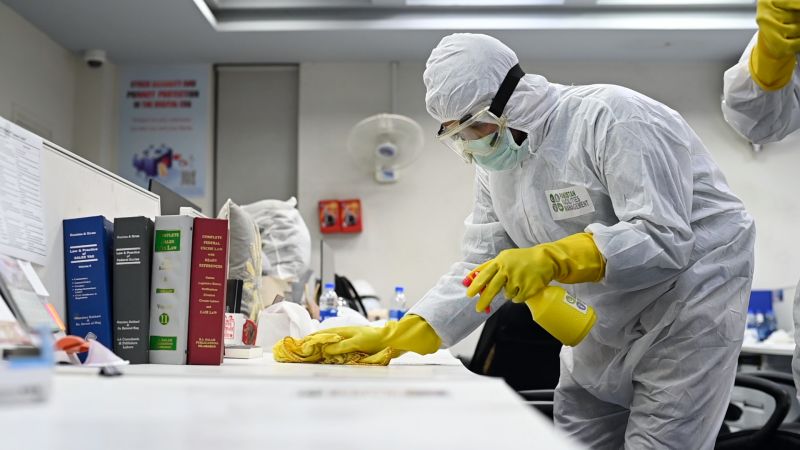
By means of surface disinfectants, you can eradicate most if not all of the risks at hand. As paranoia runs rampant and supermarket aisles are stripped clean, now more than ever, awareness is in high demand. While the pandemic threatens a second wave, we need to ascertain that we are prepared for it. One of the easiest means of combatting the spread of the COVID-19 virus is through disinfection, so it is very important to keep disinfecting the surface of the commonly used areas.
Join us in learning some basic dos and don’ts for surface disinfectants that will help you pick the right product and make the best use of it.
Decide On A Surface Disinfectant
Depending on the surfaces that you have to work with, your choice of disinfectant will vary. You might want to choose a quaternary ammonium solution such as our Chemcide PFM Surface Disinfectant that works tremendously well with a wide range of surfaces. The best aspect of quaternary ammonium products is that they are effective for longer periods of time and are safe to use for food surfaces as well.
Familiarize Yourself With The Contents
A lot of people assume that using stronger chemicals such as bleach yields cleaner surfaces. Not only is that a myth, but strong chemicals contribute to a myriad of health problems and severely damage your surfaces. After selecting your disinfectant, you should familiarize yourself with its contents to make sure that it is a perfect fit for all your disinfection needs. Certified products containing ingredients recommended by health organizations are your best bet.
Prioritize High-Contact Surfaces
Whether you are at home or in the office, pay attention to areas that are frequently touched by multiple people such as door handles, countertops, taps, office desks, and personal electronic devices. Those areas require the most attention and regular disinfection to keep others safe.
Ensure Maximum Ventilation
Regardless of when and where you make use of surface disinfectants, it is imperative to ensure the area is well ventilated. Pop open the windows and doors and allow the fresh air to replace the strong odors exuded by the chemicals.
Avoid Direct Contact With Skin
Surface disinfectants do not double up as hand sanitizers. Since they demonstrate bactericidal and fungicidal functions, they pose a great risk to human skin. When using them to clean surfaces, make sure to wear protective gear such as gloves and a mask to avoid inhaling any fumes.
Steer Clear Of Mixing
Avoid mixing multiple disinfectants together while cleaning. At times, the different properties of the chemicals present in different disinfectants change when they are combined. So instead of achieving what you would assume to be premium disinfection, you will be left with an ineffective solution.
Account For Usage
When using surface disinfectants, you will require far bigger quantities than you would think. For that reason, you should account for usage and regularity when purchasing. Our Chemcide PFM Surface Disinfectant comes in two sizes of 5L and 30L that you can choose from depending on the surface area of the place you plan on disinfecting.
Bearing in mind these simple instructions will largely improve your understanding of how surface disinfectants work and guarantee proper usage. Don’t forget to keep all disinfectants out of the reach of children and adopt a regular disinfection schedule!
Frequently Asked Questions
FAQs for Surface Disinfectants
How can I pick the best surface disinfectant?
Choose a potent and certified product that will effectively disinfect your surfaces without
damaging them such as our PFM Surface Disinfectant.
How long does a disinfected surface remain clean?
A surface remains clean after disinfection until the next person comes into contact with it.
Is disinfecting the same as sanitizing?
No, disinfecting cleans and kills germs in one go whereas sanitization requires pre-cleaning and is safer for human skin. Our Surface Disinfectant and HandiGel Hand Sanitizer are great choices to work with.
What is disinfection contact time?
It is the time required to keep the disinfectant moist on a surface before wiping it clean. Ideally, you should aim for 30 seconds to 2 minutes of contact time.
